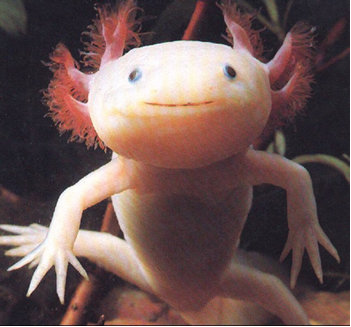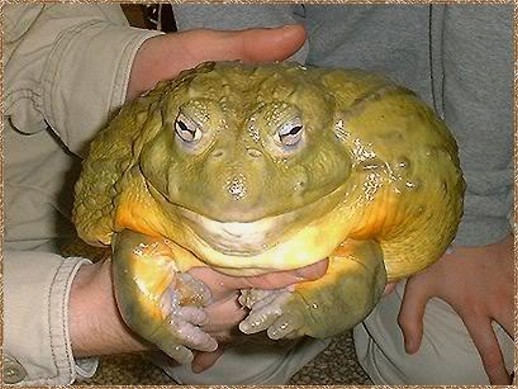the command line
Objectives
- Define what the command line is
- Learn command line navigation and file structure
- Learn to manipulate files and folders via command line
The command line (or terminal) is a faster and more powerful way to maneuver your operating system than by using a GUI (graphical user interface), such as Windows Explorer or Mac Finder.
Use special keywords to do everything you can with a GUI and more.
What the Command Line Does
Get-Service | Where-Object {$_.Status –eq “Running”}OSX (Mac) and Linux operating systems are both based on Unix and share many of the same terminal commands.
However, Powershell has adopted aliases that mimic the most common Unix commands.
Note about Windows vs. OSX
Windows has an entirely different kernel (base) and has traditionally had its own command-line syntax for MS-DOS and command prompt.
Powershell ships with all modern Windows systems (since Windows 7) and is a superior shell to command prompt. It compares favorably with Unix-based shells (such as bash).
Powershell
The commands we will learn in Powershell are mostly Unix-like aliases for "cmdlets" that do things like change directories, manipulate files, and so forth.
You can write really powerful scripts with Powershell, which is built on the .NET platform. We will not cover that in this course.
How we'll use it
We will use the terminal to:
- navigate around
- create and remove directories and files
- move, copy, and paste things
- use version control (git) to keep track of changes
- Later, execute Python scripts
INSTALLATION TIME
It's actually not that bad!
Option 1: Mac
Option 2: PC
Option 3: Cloud9
There's a
video for that!
There's a
video for that!
There's a
video for that!
🍏
💻
☁️
(for once)
MAC INSTALLATION
PC INSTALLATION
Cloud9
INSTALLATION
OS File Structure
Operating Systems organize their folders in a hierarchy (a tree) with parents and children, all relative to a base root directory.
C:\
Program Files
Users
colt
...
Files and directories have absolute paths based on the root, where each additional level down adds a "\".
C:\Users\colt
The absolute path for "Colt" is:
Where am I?
The green directory below is a special directory called "home", which is also known as "~". This is the default directory upon opening your terminal.
C:\
Program Files
Users
colt ~
...
How do I find out where I am?
The cmdlet "pwd" (print working directory) will tell you the full absolute path of where you're at!
C:\
Program Files
Users
Colt ~
...
stuff
pwdPath
----
C:\Users\colt\stuffNavigating Absolutely
The command "cd" ( "change directory") followed by the absolute path of the folder will navigate you directly there.
C:\
Program Files
Users
colt ~
...
stuff
pwdcd C:\UserspwdC:\UsersPath
----
C:\Users\colt\stuffNavigating Relatively
The dot "." stands for current directory, and dot-dot ".." stands for parent directory. This allows for relative navigation:
C:\
Program Files
Users
colt ~
...
stuff
pwdcd ..pwdPath
----
C:\Users\colt\stuffC:\Users\coltWhat's Inside?
The keyword "ls" will "list" the contents of a directory.
Directory: C:\Users\colt
Mode LastWriteTime Length Name
---- ------------- ------ ----
d----- 12/28/2017 3:31 PM .config
d-r--- 1/5/2018 9:26 PM Contacts
d-r--- 1/10/2018 9:55 PM Desktop
d-r--- 1/5/2018 9:26 PM Documents
d-r--- 1/5/2018 9:26 PM Downloads
d-r--- 1/5/2018 9:26 PM Favorites
d-r--- 1/21/2018 3:03 PM Google Drive
d----- 2/7/2017 3:49 PM Intel
d-r--- 1/18/2018 11:01 PM Links
d-r--- 1/5/2018 9:26 PM Music
dar--- 1/21/2018 3:03 PM OneDrive
d-r--- 1/5/2018 9:26 PM Pictures
d----- 12/28/2017 3:21 PM projects
d-r--- 1/5/2018 9:26 PM Saved Games
d-r--- 1/5/2018 9:26 PM Searches
d----- 1/21/2018 3:31 PM stuff
d-r--- 1/21/2018 3:03 PM Videos
lsQUIZ TIME!
Creating Directories
The command "mkdir" ("make directory") followed by the name of the new directory will create a new child directory inside the current directory.
colt ~
mkdir catpicscatpics
stuff
Directory: C:\Users\colt\stuff
Mode LastWriteTime Length Name
---- ------------- ------ ----
d----- 1/21/2018 3:39 PM catpicscd catpicsCreating Files
New-Item -ItemType file followed by the filename and file-type extension will create a new file of that type.
colt ~
New-Item -ItemType file favs.txtcatpics
stuff
favs.txt
ls Directory: C:\Users\colt\stuff\catpics
Mode LastWriteTime Length Name
---- ------------- ------ ----
-a---- 1/21/2018 5:28 PM 2 favs.txtIn Powershell, we can create files by putting empty content in them using the New-Item cmdlet.
SUPER QUICK ACTIVITY!
- Make a new "animals" directory
- Inside of "animals" create "salamanders" and "frogs" directories
- Inside of "salamanders" add a new file "axolotl.txt"
- Inside of "frogs" add a new file:
PyxicephalusAdspersus.txt (pixieFrog.txt is fine)
axolotls Are awesome
- Really adorable smile
- Once worshipped by Aztecs
- Can regenerate limbs, skin, and spinal cord!
- 1000x more resistant to cancer than any other animal on earth!
- They glow in the dark

PIXIE FROGS

Moving / Renaming Things
Files can be moved or renamed using the "mv" (" move") keyword, which takes two arguments: the source and the destination.
Colt ~
mv favs.txt GOAT.txtcatpics
stuff
favs.txt
GOAT.txt
lsMode LastWriteTime Length Name
---- ------------- ------ ----
-a---- 1/21/2018 5:28 PM 2 GOAT.txtmv GOAT.txt ..cd ..lsMode LastWriteTime Length Name
---- ------------- ------ ----
d----- 1/21/2018 5:33 PM catpics
-a---- 1/21/2018 5:28 PM 2 GOAT.txtRemoving Files
Files can be deleted using the "rm" ("remove") keyword.
Colt ~
catpics
stuff
GOAT.txt
rm GOAT.txtlsMode LastWriteTime Length Name
---- ------------- ------ ----
d----- 1/21/2018 5:33 PM catpicsRemoving Directories
Directories can be deleted using the "rm" keyword, with the added option "-r" ("recursive"). You can also add the "-fo" ("force") to prevent warnings.
Colt ~
lscatpics
stuff
catpicsrm -r -fo catpicslsWarning: "rm -r fo" is a dangerous command! Be extremely careful what folder you pass to it because you will never get it back.
QUIZ TIME!
Recap
- OS file structure is hierarchical, tree-based
-
Navigate using these commands:
- cd "change directory"
- pwd "print working directory"
- ls "list contents"
-
Remember these aliases:
- C:\ is root directory
- ~ is home
- . is current
- .. is parent
-
Manipulate files with:
- "mkdir" create directories
- "New-Item -ItemType file" create files
- "mv" move and rename
- "rm" to remove files, "-r" to remove directories
YOUR TURN
Git
and
github
Posh Git
For Powershell, we can use the Posh Git package here: https://github.com/dahlbyk/posh-git
YOUR TURN
Command Line(Windows)
By colt
Command Line(Windows)
- 15,827



